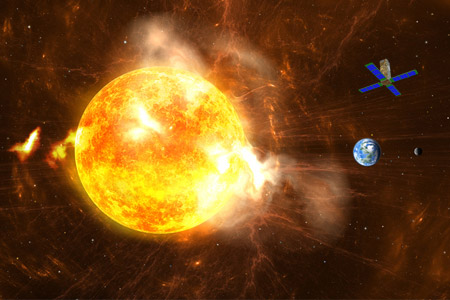Space weather: a nanosatellite to measure radiation
ONERA and ISAE-SUPAERO have signed a contract within the framework of the launching of the Occitanie Region CREME project (ERDF), the purpose of which is to develop a nanosatellite to measure radiation around the Earth - a constraint for flying satellites. ONERA will bring in its expertise in space radiative environment by developing the measuring instrument.

How can satellites be protected from radiation belts, which damage on-board electronics? The purpose of the CREME (Cubesat for Radiation Environment Monitoring Experiment) project, financed by ERDF funds from the Occitanie region, and implemented at the Toulouse University Space Centre (CSUT), is to design a 3U Cubesat (30x10x10cm), whose payload will be specifically tasked with measuring the radiation induced by the Van Allen belts, which are very restrictive for operational satellites.
While ISAE-SUPAERO will be responsible for the nanosat platform and ground station, ONERA will design the miniaturised measuring instrument, an in-flight demonstrator, thanks to its expertise in the physics and measurement of Van Allen belts. The long-term objective will be to have a new instrument, to be industrialised, in addition to instruments such as ICARE-NG from CNES. Although less efficient, it would be less expensive and easier to carry.
More specifically, ONERA will bring in its expertise to the design of space radiation detection heads, to the development of the associated electronics and to data processing. Three industrial partners are participating in this project (own financing): 3D-PLUS, EREMS and TRAD. We are happy to share our results with them and to take advantage of their expertise.